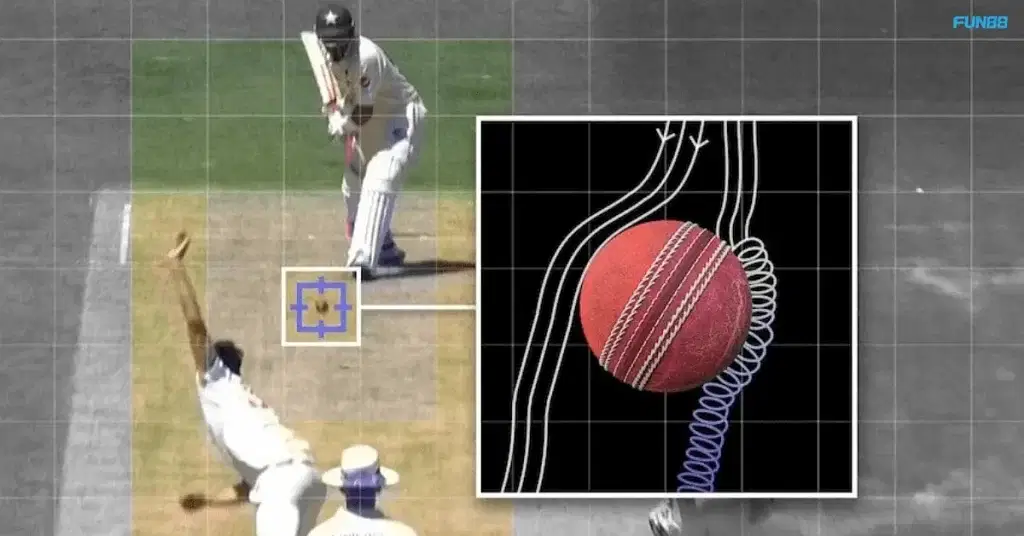The art of swing bowling in cricket is a mesmerising skill that has perplexed and delighted players and spectators. Despite modern cricket being dominated by batters, bowlers skilled in moving the ball are still impactful. From Waseem Akram to Dale Steyn, Glenn McGrath to Mohd Shami, players have shown that swing bowling is a sublime art and can win you matches.
Whether you’re on a quest to master this technique yourself or simply curious about the nuances of this craft, understanding how to swing a cricket ball offers insights into one of cricket’s most fascinating facets.
What is Swing Bowling in Cricket?
Swing bowling in cricket is a subtle yet effective technique in which bowlers manipulate the ball’s path mid-air, deceiving batters by altering their trajectory. This makes it harder for them to effectively judge the line and length, often leading to a false stroke or an edge.
Swing bowling is about exploiting the ball’s condition, the bowler’s action, and atmospheric variables to make the ball curve unpredictably. Mastery over swing bowling transforms the bowler into a tactical maestro capable of creating wicket-taking opportunities in all conditions.
Cricketers who excel in this domain employ a blend of precision and science, working tirelessly to read the game and pitch their deliveries to exploit small advantages. For aspiring cricketers, understanding swing fundamentals paves the way toward improved performance and, potentially, match-winning spells.
The Physics Behind Swing Bowling
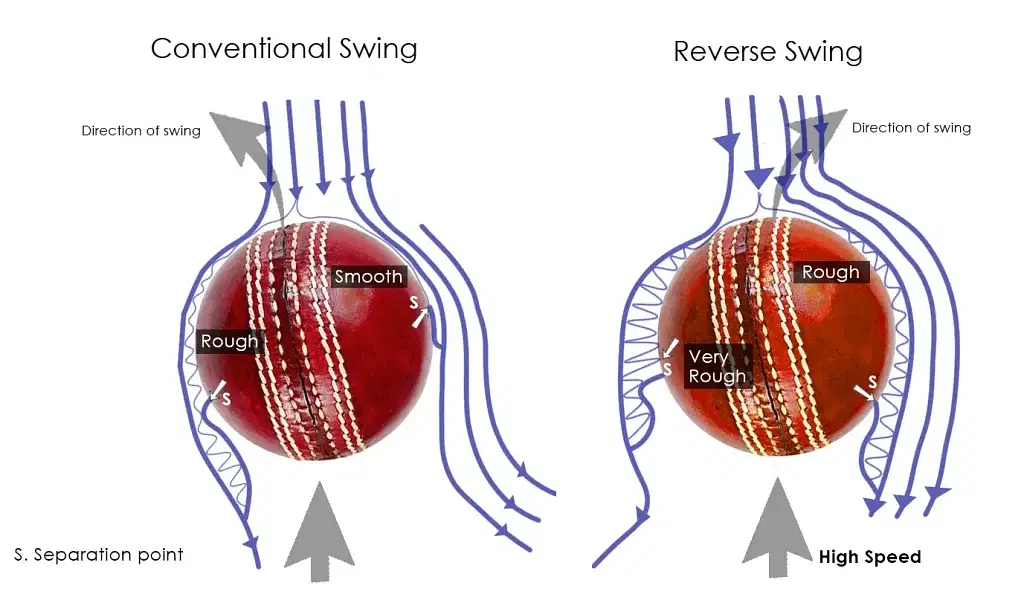
The power of swing bowling lies in understanding basic physics—how atmospheric conditions affect a cricket ball’s aerodynamics. Here’s a simplified breakdown of the science involved in swinging a cricket ball. Swing occurs due to the asymmetrical flow of air over the ball.
As the ball travels towards the batter, air pressure differences on either side cause it to deviate from its usual path. Key factors influencing this phenomenon include:
- The Ball’s Seam: Positioned strategically, the seam acts as a rudder, guiding air over one side of the ball differently.
- Ball Condition: A shiny surface reduces friction, while a rough side increases turbulence behind the ball, aiding swing.
- Weather Conditions: Humidity and overcast conditions enhance swing by allowing the ball more grip in the air.
- Bowler’s Action: Subtle changes in wrist position can accentuate swing, making the ball swing wildly or faintly, depending on the execution.
Understanding these elements guides bowlers in their approach, helping them decide how to grip and deliver the cricket ball for optimal swing.
Related Read: How to Hold a Cricket Bat for Powerful and Accurate Shots?
Types of Swing Bowling
Swing bowling encapsulates various techniques bowers utilise to extract movement. Here are the prominent types that every bowler should familiarise themselves with.
Inswing
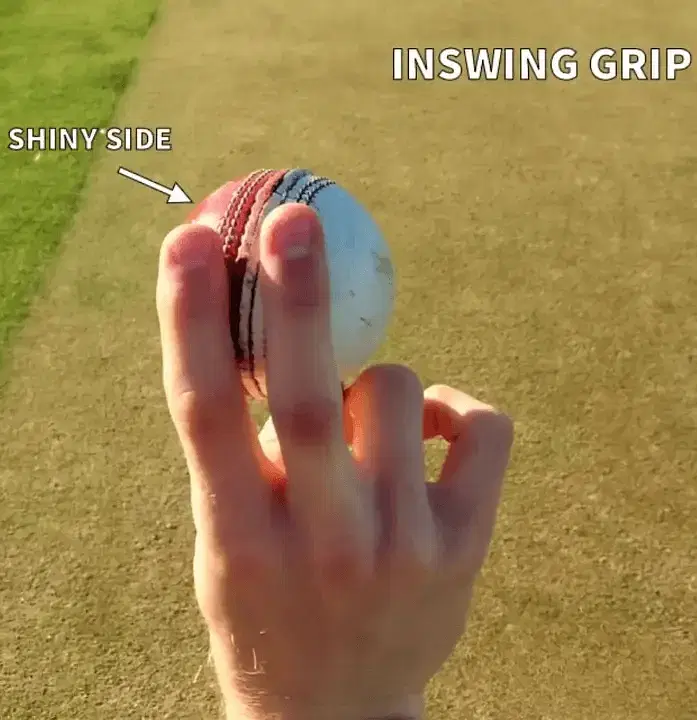
Inswing bowling is designed to curve toward the batter, typically aimed at hitting the stumps or inducing an LBW. The seam faces towards the slip fielders, and the bowler tilts their wrist slightly to help the ball move in an arc into the batter.
Achieving consistent inswing requires precision in alignment and wrist angle. By maintaining a shiny surface on one side and applying strategic wrist movements, the bowler invites the batter to drive—a trap often leading to dismissals through bowled or LBW when executed correctly.
Outswing
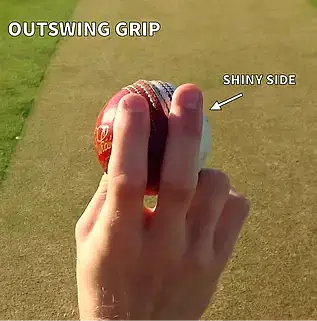
Outswing moves away from the batter, gliding past the outside edge, often tempting them into a false stroke. The seam points slightly toward the batter and first slip, requiring the wrist to remain firm at the time of release.
When perfected, outswing tests the batter’s patience and can snag edges through inviting pads to drive deliveries that drift further away. Especially in test cricket, where a bowler has to test the temperament and skills of the batter continuously, outswing is a very impactful skill.
Strategic usage of outswing can lure even the most seasoned batters into fishing outside their off stump, culminating in spectacular wicket-taking instances.
Reverse Swing
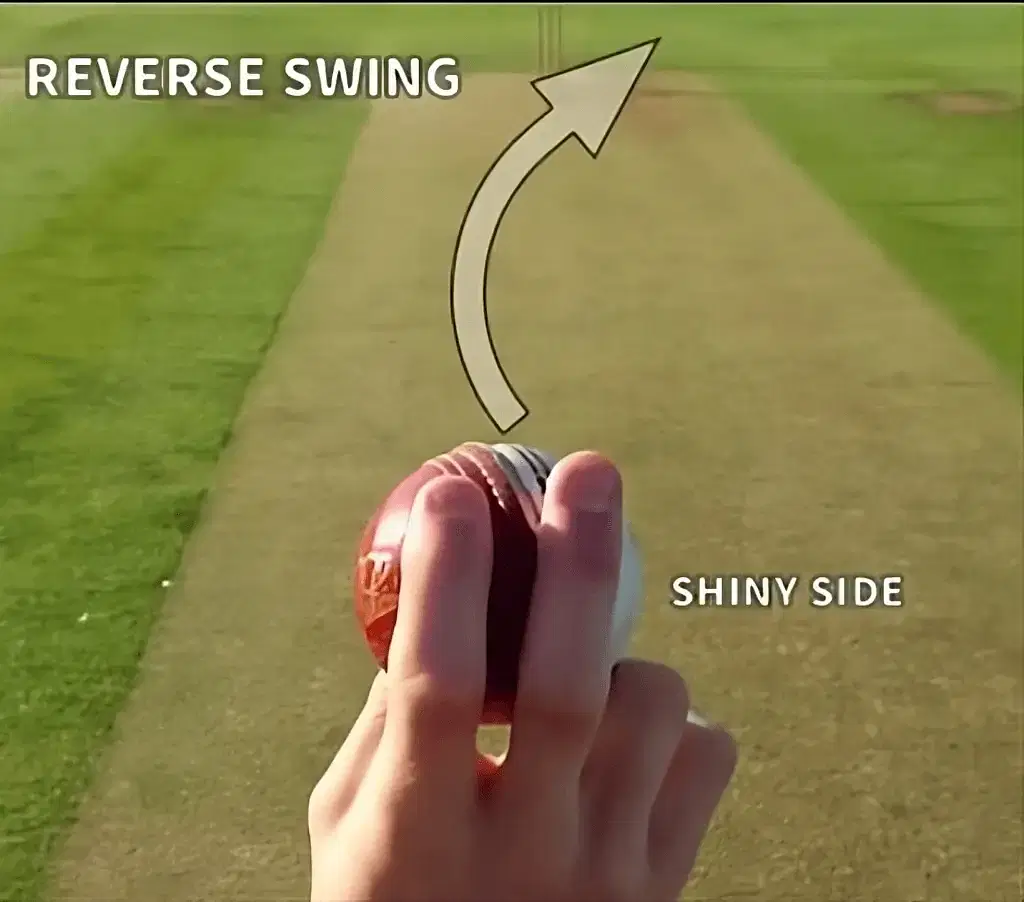
Reverse swing is the magical trick in a bowler’s repertoire, occurring when a relatively older ball suddenly changes direction contrary to conventional swing patterns. The rougher side leads the ball into its swing, manipulating turbulent air flows even further.
Mastery of reverse swing demands an acute understanding of ball maintenance and conditions conducive to its appearance. Practical usage can bamboozle batters late in the innings, often when they least expect it, culminating in critical breakthroughs.
Also Read: What is a Free Hit in Cricket? Various Formats Rules
Factors Influencing Swing
Swing bowling is an art that requires understanding numerous nuances. Several factors significantly influence the extent of swing a bowler can generate. Let’s explore these pivotal elements.
Ball Condition
The condition of the ball plays a vital role in its ability to swing. When it comes to swing, one side’s shine juxtaposed against the rough texture of the other is crucial for creating the differential air pressure required to make the ball move.
- Shiny Side: Regularly maintained by polishing, the smooth side produces less friction with the air.
- Rough Side: This allows the air to cling onto the ball longer, causing turbulence and enhancing swing.
As overs progress and the ball naturally wears, consistently managing the ball’s surface becomes essential. Skilled bowlers know how to leverage a well-maintained ball to induce swing even under varying atmospheric conditions.
Seam Position
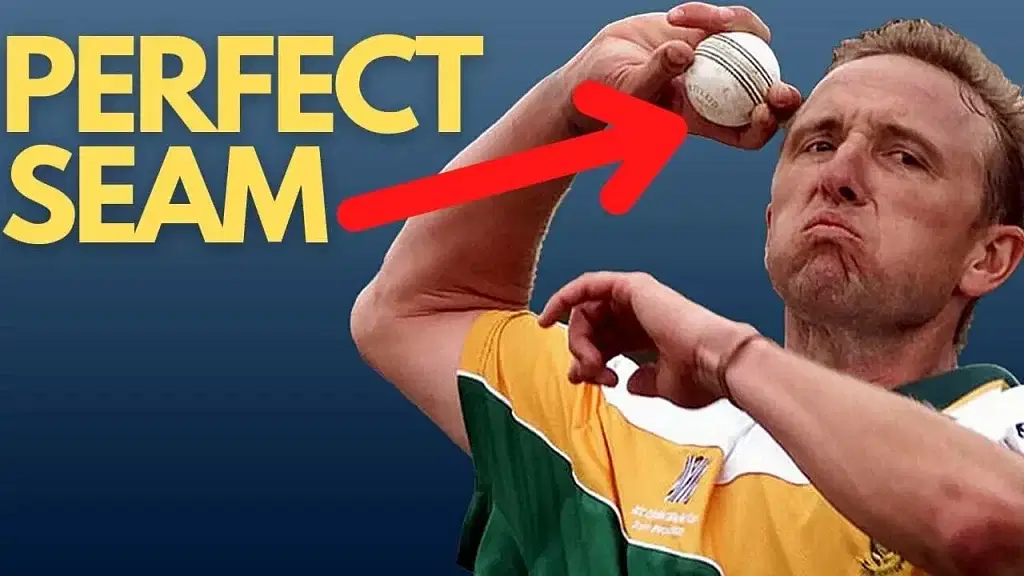
The seam acts as an aerodynamic guide, dictating airflow and facilitating swing. Effective seam positioning is paramount, as it is the seam that disrupts airflow, setting up the conditions for the ball to swing.
- Angled Seam: Slight deviations in seam position when aligned toward slips or leg-slip alter the ball’s trajectory, creating either outswing or inswing.
- Upright Seam: An upright seam ensures stable rotation, enhancing the predictability and effectiveness of the swing.
Controlling seam orientation requires precision and repetition, empowering bowlers to alter line and length with subtle impacts in real time.
Grip and Release
A batsman’s kryptonite often lies in how the bowler grips and releases the ball. Grip influences how the seam cuts through the air, while release affects the ball’s spin and swing potential.
- Finger Pressure: Bowlers affect lateral movement as it leaves the hand by varying pressure on the seam.
- Release Angle: The wrist angle at the point of release tailors the swing, dictating if the ball will continue its line or deviate sharply.
Perfecting grip and release takes practice, and small tweaks can significantly influence the ball’s behaviour in mid-air.
Also Read: Top 10 Most Watched Sports in the World: From Cricket to Football
How to Add Swing to a Cricket Ball: Techniques
For those aiming to master swing bowling, understanding the techniques and mechanics involved is crucial. Here’s how you can effectively add swing to your deliveries.
Gripping the Ball
Gripping the ball impacts control and swing. A precise grip aligns the seam optimally, facilitating airflow conducive to swing dynamics.
- Grip Structure: Place the index and middle fingers on either side of the seam, ensuring the thumb rests comfortably on the ball’s underside.
- Pressure Control: Applying consistent pressure disproportionally on the shiny side can negate resistance, effectively aiding the swing.
Despite its minor appearance, grip adjustments significantly influence swing potential, providing avenues for experimentation and customisation.
Seam Positioning
Seam positioning is crucial in determining swing direction and magnitude, as it is at the heart of manipulating airflow over the ball.
- Alignment for Inswing/Outswing: Direct the seam toward slips for the outswing and the leg slip for the inswing, commanding lateral movement.
- Upright Positioning: Achieving the optimal seam angle enhances swing stability, ensuring consistency in movement.
Bowlers can entice the ball to deviate dramatically through subtle shifts in positioning, even on less obliging pitches.
Wrist Position and Action
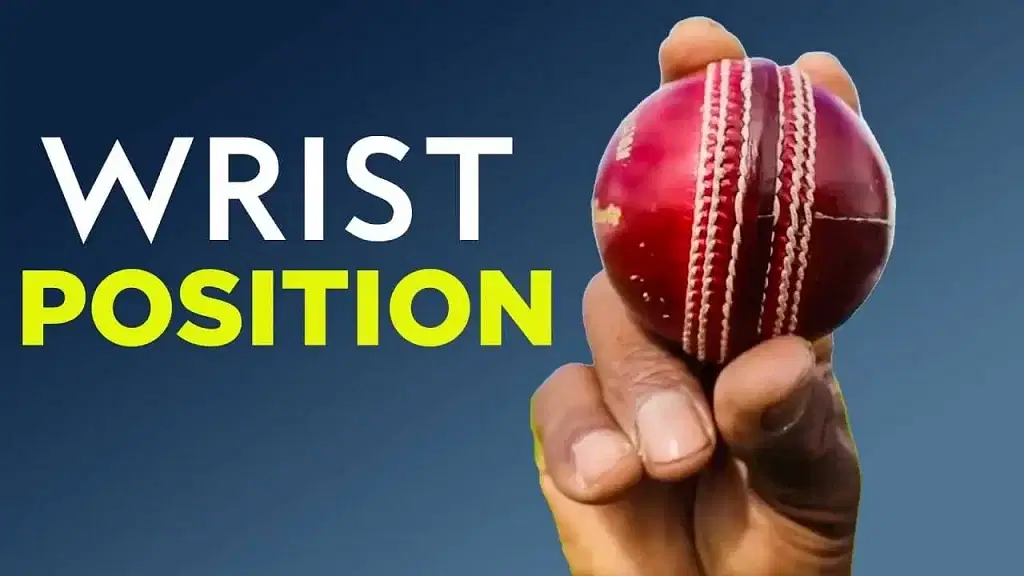
The wrist is a pivot point influencing swing, imparting subtle changes that amplify effects.
- Firm Wrist: Maintaining a steady wrist through delivery augments swing consistency, preventing erratic movement.
- Coordinated Action: Synchronizing wrist position with your overall action optimises ball rotation and magnifies swing dynamics.
A disciplined wrist coupled with fluid overall action empowers bowlers to maximise swing potential, harnessing physics and discipline to confound batters repeatedly.
Also Read: What is Agriculture Shot in Cricket? Definition, Origins and Risks
Common Mistakes in Swing Bowling
Swing bowling is an intricate art that challenges even experienced players. Here, we dissect common mistakes bowlers tend to make when attempting to master the swing.
Inconsistent Seam Positioning
Seam orientation is crucial for a consistent swing. New bowlers often need help maintaining a stable seam position, which can lead to unpredictable movement.
Solution: Regularly practice maintaining an upright seam during delivery. Drills focusing on wrist and seam control reinforce muscle memory.
Poor Ball Maintenance
Failing to maintain the condition of the ball disrupts swing potential. Insufficient attention to polishing or allowing the ball to dry out can hinder its natural trajectory.
Solution: Rub one side of the ball against your clothes to keep it consistently shiny. To maximise swing, avoid interfering with the natural deterioration of the other side.
Overreliance on Speed
Many bowlers mistakenly believe speed alone will generate swing, neglecting the subtler aspects essential for movement.
Solution: Focus on rhythm rather than sheer pace. Swing is enhanced by controlled release and alignment, so your action supports such precision.
Incorrect Grip Pressure
Applying uneven finger pressure on the ball can result in loss of control, affecting the ball’s swing capabilities.
Solution: Practice applying balanced pressure with your index and middle fingers, maintaining a light touch that allows the ball to swing naturally.
Neglecting Atmospheric Conditions
Weather conditions heavily influence swing. Failing to adjust strategy based on humidity and wind can be detrimental.
Solution: Monitor local conditions closely. High humidity favours swing, so tweak approaches based on environmental cues.
Also Read: How to Hit a Six in Cricket: Power Hitting Tips
Advanced Swing Bowling: Reverse Swing Mastery
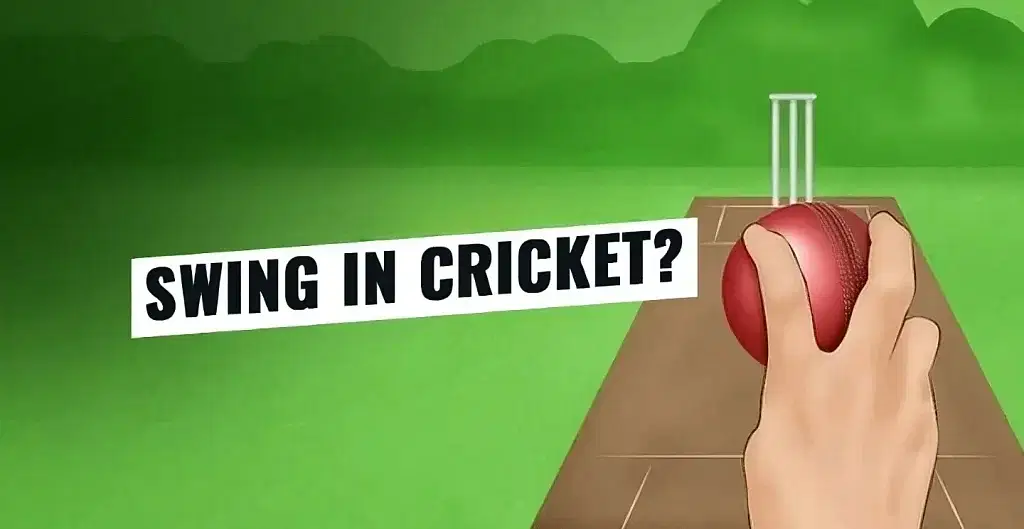
Reverse swing is the epitome of advanced bowling technique, allowing for dramatic ball movement even with a worn ball. Mastery demands skill, patience, and a keen understanding of cricket dynamics.
Understanding Reverse Swing
Reverse swing—where the ball moves in the opposite direction to conventional swing—typically occurs after significant wear. Its unpredictability is a game-changer, catching even seasoned batters off-guard.
Key Steps to Master Reverse Swing
- Ball Selection and Wear Management: Choose a ball well into its usage cycle, as reverse swing requires an adequately roughed ball surface. Monitor the ball’s condition continuously and maintain one side substantially more worn than the other to instigate an aerodynamic shift.
- Seam and Grip Adjustments: Instead of the prominent seam role in conventional swing, reverse swing primarily utilises the ball’s worn surface. Grip the ball similarly but make subtle adjustments to control seam influence and ensure optimal conditions for reverse airflow impact on the shiny side.
- Refining Bowling Action: Synchronise your entire bowling motion, emphasising seamless wrist snaps to impart necessary speed while retaining superior control over the swing. Practising clean, repeatable motions ensures consistency in capturing desired reverse swing effects.
Thriving on Reverse Swing’s Mystique
Reverse swing prevails, especially in subcontinental conditions, where wear and tear occur rapidly. However, mastering reverse swing requires discretion, integrity, and an understanding of game flow and legalities within this complex skill.
Owning this advanced technique allows bowlers to target batters with undermining ambition, turning the game’s momentum and extracting key field exploits through nuanced tactical advantage.
Practice Drills to Master Swing Bowling
Mastering swing bowling requires dedication and repetitive practice. Here are some drills designed to enhance your swing bowling skills.
Seam Position Drill
This drill focuses on maintaining an upright seam, which is crucial for a consistent swing.
- Setup: Use a practice net with a lengthwise target line to represent the seam trajectory.
- Execution: Bowl with an emphasis on keeping the seam upright. Note how the seam aligns as it travels toward the target.
- Goal: Achieve consistency in seam orientation throughout the delivery stride, ensuring the ball follows the expected line and sways effortlessly.
Grip and Release Sensitivity Drill
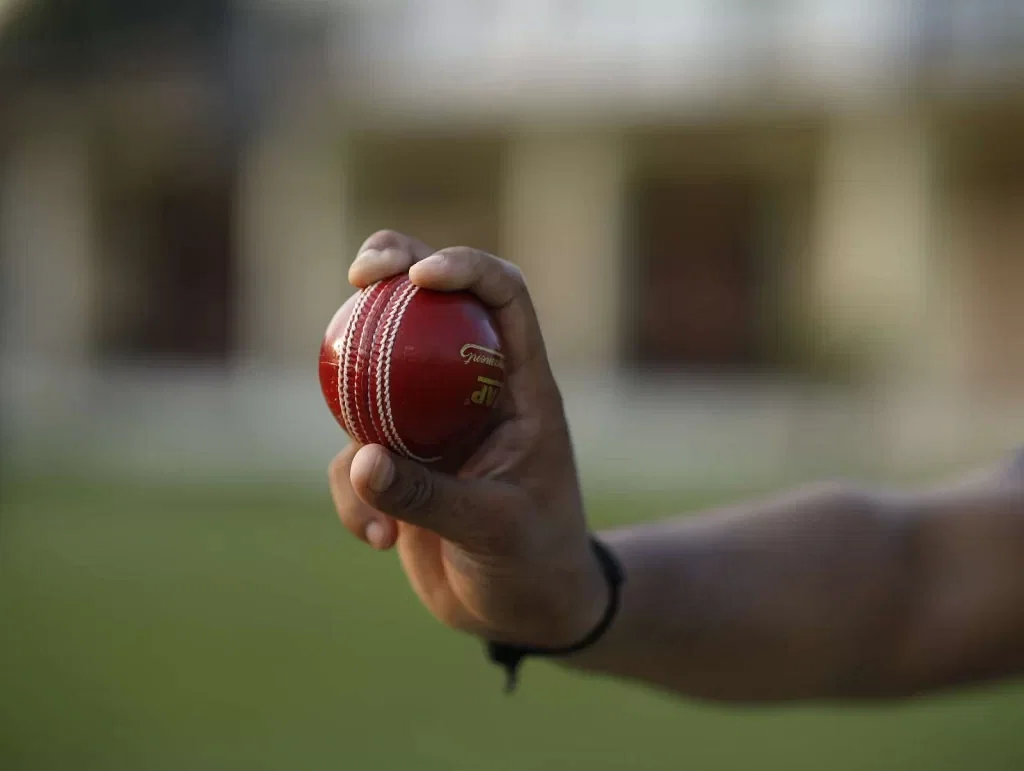
Perfecting grip and release requires acute sensitivity. This drill aids in developing balanced pressure and fluid wrist motion.
- Setup: Use tennis balls initially, practising in an open area.
- Execution: Focus on the grip with consistent pressure and ensure a fluid release, working on snapping the wrist seamlessly.
- Goal: Develop an intuitive feel for the proper grip and wrist position to control swing direction, adapting as comfortably to different pitch conditions.
Weather Adaptation Simulation
Simulating different weather environments can improve adaptability in swing bowling.
- Setup: When possible, use different pitch conditions (wet vs. dry) to simulate varied atmospheric influences.
- Execution: Practice deliveries in each condition; observe changes in swing direction and effectiveness.
- Goal: Adapt strategies swiftly during games based on real-time environmental variables, honing conventional and reverse swing proficiencies.
These drills, through rigorous and planned execution, will help you master the subtle nuances of swing bowling. Regular practice reinforces technical advancement, transforming every session into a stepping-stone toward becoming a formidable swing bowler.
Star it if you find it helpful.
